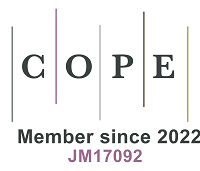REFERENCES
1. State of Global Air. State of Global Air Report 2020. Available from: https://www.stateofglobalair.org/resources/report/state-global-air-report-2020. [Last accessed on 29 March 2024].
2. Wang J, Du W, Lei Y, et al. Quantifying the dynamic characteristics of indoor air pollution using real-time sensors: current status and future implication. Environ Int 2023;175:107934.
3. Andrade A, Dominski FH. Indoor air quality of environments used for physical exercise and sports practice: systematic review. J Environ Manage 2018;206:577-86.
4. Raju S, Siddharthan T, McCormack MC. Indoor air pollution and respiratory health. Clin Chest Med 2020;41:825-43.
6. Amoatey P, Omidvarborna H, Baawain MS, Al-Mamun A. Indoor air pollution and exposure assessment of the gulf cooperation council countries: a critical review. Environ Int 2018;121:491-506.
7. Tran VV, Park D, Lee YC. Indoor air pollution, related human diseases, and recent trends in the control and improvement of indoor air quality. Int J Environ Res Public Health 2020;17:2927.
8. Lucattini L, Poma G, Covaci A, de Boer J, Lamoree MH, Leonards PEG. A review of semi-volatile organic compounds (SVOCs) in the indoor environment: occurrence in consumer products, indoor air and dust. Chemosphere 2018;201:466-82.
9. Grippo A, Zhu K, Yeung EH, et al. Indoor air pollution exposure and early childhood development in the Upstate KIDS Study. Environ Res 2023;234:116528.
10. Abdel-shafy HI, Mansour MS. A review on polycyclic aromatic hydrocarbons: Source, environmental impact, effect on human health and remediation. Egypt J Pet 2016;25:107-23.
11. Chuang JC, Callahan PJ, Menton RG, Gordon SM, Lewis RG, Wilson NK. Monitoring methods for polycyclic aromatic hydrocarbons and their distribution in house dust and track-in soil. Environ Sci Technol 1995;29:494-500.
12. Ohura T, Amagai T, Fusaya M, Matsushita H. Polycyclic aromatic hydrocarbons in indoor and outdoor environments and factors affecting their concentrations. Environ Sci Technol 2004;38:77-83.
13. Kameda T. Atmospheric chemistry of polycyclic aromatic hydrocarbons and related compounds. J Health Sci 2011;57:504-11.
14. Andersen HV, Gunnarsen L, Knudsen LE, Frederiksen M. PCB in air, dust and surface wipes in 73 Danish homes. Int J Hyg Environ Health 2020;229:113429.
15. Menichini E, Iacovella N, Monfredini F, Turrio-baldassarri L. Relationships between indoor and outdoor air pollution by carcinogenic PAHs and PCBs. Atmos Environ 2007;41:9518-29.
16. Andersen HV, Kolarik B, Nielsen NS, et al. Indoor air concentrations of PCB in a contaminated building estate and factors of importance for the variance. Build Environ 2021;204:108135.
17. Clausen PA, Liu Z, Kofoed-Sørensen V, Little J, Wolkoff P. Influence of temperature on the emission of di-(2-ethylhexyl)phthalate (DEHP) from PVC flooring in the emission cell FLEC. Environ Sci Technol 2012;46:909-15.
18. Gong M, Zhang Y, Weschler CJ. Measurement of phthalates in skin wipes: estimating exposure from dermal absorption. Environ Sci Technol 2014;48:7428-35.
19. Deziel NC, Wei WQ, Abnet CC, et al. A multi-day environmental study of polycyclic aromatic hydrocarbon exposure in a high-risk region for esophageal cancer in China. J Expo Sci Environ Epidemiol 2013;23:52-9.
20. Aslam I, Baqar M, Qadir A, Mumtaz M, Li J, Zhang G. Polychlorinated biphenyls in indoor dust from urban dwellings of Lahore, Pakistan: congener profile, toxicity equivalency, and human health implications. Indoor Air 2021;31:1417-26.
21. Buck Louis GM, Peterson CM, Chen Z, et al. Bisphenol A and phthalates and endometriosis: the Endometriosis: Natural History, Diagnosis and Outcomes Study. Fertil Steril 2013;100:162-9.e1.
22. Zhu Q, Jia J, Zhang K, Zhang H, Liao C, Jiang G. Phthalate esters in indoor dust from several regions, China and their implications for human exposure. Sci Total Environ 2019;652:1187-94.
23. Liu L, Liu X, Ma X, Ning B, Wan X. Analysis of the associations of indoor air pollution and tobacco use with morbidity of lung cancer in Xuanwei, China. Sci Total Environ 2020;717:135232.
24. Downward GS, Hu W, Large D, et al. Heterogeneity in coal composition and implications for lung cancer risk in Xuanwei and Fuyuan counties, China. Environ Int 2014;68:94-104.
25. Chen H, Zhang Y, Zhang L, et al. Indoor air pollution from coal combustion and tobacco smoke during the periconceptional period and risk for neural tube defects in offspring in five rural counties of Shanxi Province, China, 2010-2016. Environ Int 2023;171:107728.
26. Seo S, Jung K, Park M, Kwon H, Choi S. Indoor air pollution of polycyclic aromatic hydrocarbons emitted by computers. Build Environ 2022;218:109107.
27. Ali N. Polycyclic aromatic hydrocarbons (PAHs) in indoor air and dust samples of different Saudi microenvironments; health and carcinogenic risk assessment for the general population. Sci Total Environ 2019;696:133995.
28. Nováková Z, Novák J, Bittner M, et al. Toxicity to bronchial cells and endocrine disruptive potentials of indoor air and dust extracts and their association with multiple chemical classes. J Hazard Mater 2022;424:127306.
29. Al-Alam J, Sonnette A, Delhomme O, Alleman LY, Coddeville P, Millet M. Pesticides in the indoor environment of residential houses: a case study in Strasbourg, France. Int J Environ Res Public Health 2022;19:14049.
30. Wania F, Shen L, Lei YD, Teixeira C, Muir DCG. Development and calibration of a resin-based passive sampling system for monitoring persistent organic pollutants in the atmosphere. Environ Sci Technol 2003;37:1352-9.
31. Sonnette A, Delhomme O, Alleman LY, Coddeville P, Millet M. A versatile method for the quantification of 100 SVOCs from various families: Application to indoor air, dust and bioaccessibility evaluation. Microchem J 2021;169:106574.
32. Al-Alam J, Lévy M, Ba H, Pham-Huu C, Millet M. Passive air samplers based on ceramic adsorbent for monitoring of organochlorine pesticides, polycyclic aromatic hydrocarbons and polychlorinated biphenyls in outdoor air. Environ Technol Innov 2020;20:101094.
33. Wolkoff P, Nielsen GD. Organic compounds in indoor air - their relevance for perceived indoor air quality? Atmos Environ 2001;35:4407-17.
34. EPA. What are volatile organic compounds (VOCs)? 2024. Available from: https://www.epa.gov/indoor-air-quality-iaq/what-are-volatile-organic-compounds-vocs. [Last accessed on 26 March 2024].
35. Baek SO, Field RA, Goldstone ME, Kirk PW, Lester JN, Perry R. A review of atmospheric polycyclic aromatic hydrocarbons: Sources, fate and behavior. Water Air Soil Pollut 1991;60:279-300.
36. Qi H, Li WL, Zhu NZ, et al. Concentrations and sources of polycyclic aromatic hydrocarbons in indoor dust in China. Sci Total Environ 2014;491-2:100-7.
37. Maragkidou A, Arar S, Al-Hunaiti A, et al. Occupational health risk assessment and exposure to floor dust PAHs inside an educational building. Sci Total Environ 2017;579:1050-6.
38. Aslam R, Sharif F, Baqar M, Shahzad L. Source identification and risk assessment of polycyclic aromatic hydrocarbons (PAHs) in air and dust samples of Lahore City. Sci Rep 2022;12:2459.
39. Kamal A, Cincinelli A, Martellini T, Malik RN. A review of PAH exposure from the combustion of biomass fuel and their less surveyed effect on the blood parameters. Environ Sci Pollut Res Int 2015;22:4076-98.
40. Rodgman A, Perfetti TA. The composition of cigarette smoke: a catalogue of the polycyclic aromatic hydrocarbons. Cont Tob Nicotine Res 2006;22:13-69.
41. Olasehinde TA, Olaniran AO. Neurotoxicity of anthracene and benz[a]anthracene involves oxidative stress-induced neuronal damage, cholinergic dysfunction and disruption of monoaminergic and purinergic enzymes. Toxicol Res 2022;38:365-77.
42. Bonnet JL, Guiraud P, Dusser M, et al. Assessment of anthracene toxicity toward environmental eukaryotic microorganisms: tetrahymena pyriformis and selected micromycetes. Ecotoxicol Environ Saf 2005;60:87-100.
43. Audy O, Melymuk L, Venier M, et al. PCBs and organochlorine pesticides in indoor environments - a comparison of indoor contamination in Canada and Czech Republic. Chemosphere 2018;206:622-31.
44. Cetin B, Odabasi M. Polybrominated diphenyl ethers (PBDEs) in indoor and outdoor window organic films in Izmir, Turkey. J Hazard Mater 2011;185:784-91.
45. Wang W, Huang MJ, Zheng JS, Cheung KC, Wong MH. Exposure assessment and distribution of polychlorinated biphenyls (PCBs) contained in indoor and outdoor dusts and the impacts of particle size and bioaccessibility. Sci Total Environ 2013;463-4:1201-9.
46. Whitehead TP, Brown FR, Metayer C, et al. Polychlorinated biphenyls in residential dust: sources of variability. Environ Sci Technol 2014;48:157-64.
47. Frederiksen M, Andersen HV, Haug LS, et al. PCB in serum and hand wipes from exposed residents living in contaminated high-rise apartment buildings and a reference group. Int J Hyg Environ Health 2020;224:113430.
48. Montano L, Pironti C, Pinto G, et al. Polychlorinated biphenyls (PCBs) in the environment: occupational and exposure events, effects on human health and fertility. Toxics 2022;10:365.
49. Munawar A, Akram MS, Javed MT, Shahid M. Chapter 43 - Polychlorinated biphenyls (PCBs): characteristics, toxicity, phytoremediation, and use of transgenic plants for PCBs degradation. In: Handbook of bioremediation. Elsevier; 2021. pp. 677-87.
50. Kashyap D, Agarwal T. Concentration and factors affecting the distribution of phthalates in the air and dust: a global scenario. Sci Total Environ 2018;635:817-27.
51. Subedi B, Sullivan KD, Dhungana B. Phthalate and non-phthalate plasticizers in indoor dust from childcare facilities, salons, and homes across the USA. Environ Pollut 2017;230:701-8.
52. Feng YX, Feng NX, Zeng LJ, et al. Occurrence and human health risks of phthalates in indoor air of laboratories. Sci Total Environ 2020;707:135609.
53. Lee B, Yoon H, Lee B, Kim P, Moon H, Kim Y. Occurrence of bisphenols and phthalates in indoor dust collected from Korean homes. J Ind Eng Chem 2021;99:68-73.
54. Bornehag CG, Lundgren B, Weschler CJ, Sigsgaard T, Hagerhed-Engman L, Sundell J. Phthalates in indoor dust and their association with building characteristics. Environ Health Perspect 2005;113:1399-404.
55. Wang L, Gong M, Xu Y, Zhang Y. Phthalates in dust collected from various indoor environments in Beijing, China and resulting non-dietary human exposure. Build Environ 2017;124:315-22.
56. Lyche JL, Gutleb AC, Bergman A, et al. Reproductive and developmental toxicity of phthalates. J Toxicol Environ Health B Crit Rev 2009;12:225-49.
57. Søeborg T, Frederiksen H, Andersson AM. Cumulative risk assessment of phthalate exposure of Danish children and adolescents using the hazard index approach. Int J Androl 2012;35:245-52.
58. Ataei Y, Sun Y, Liu W, S Ellie A, Dong H, Ahmad UM. Health effects of exposure to indoor semi-volatile organic compounds in chinese building environment: a systematic review. Int J Environ Res Public Health 2022;20:678.
60. Rauert C, Harrad S. Mass transfer of PBDEs from plastic TV casing to indoor dust via three migration pathways - a test chamber investigation. Sci Total Environ 2015;536:568-74.







